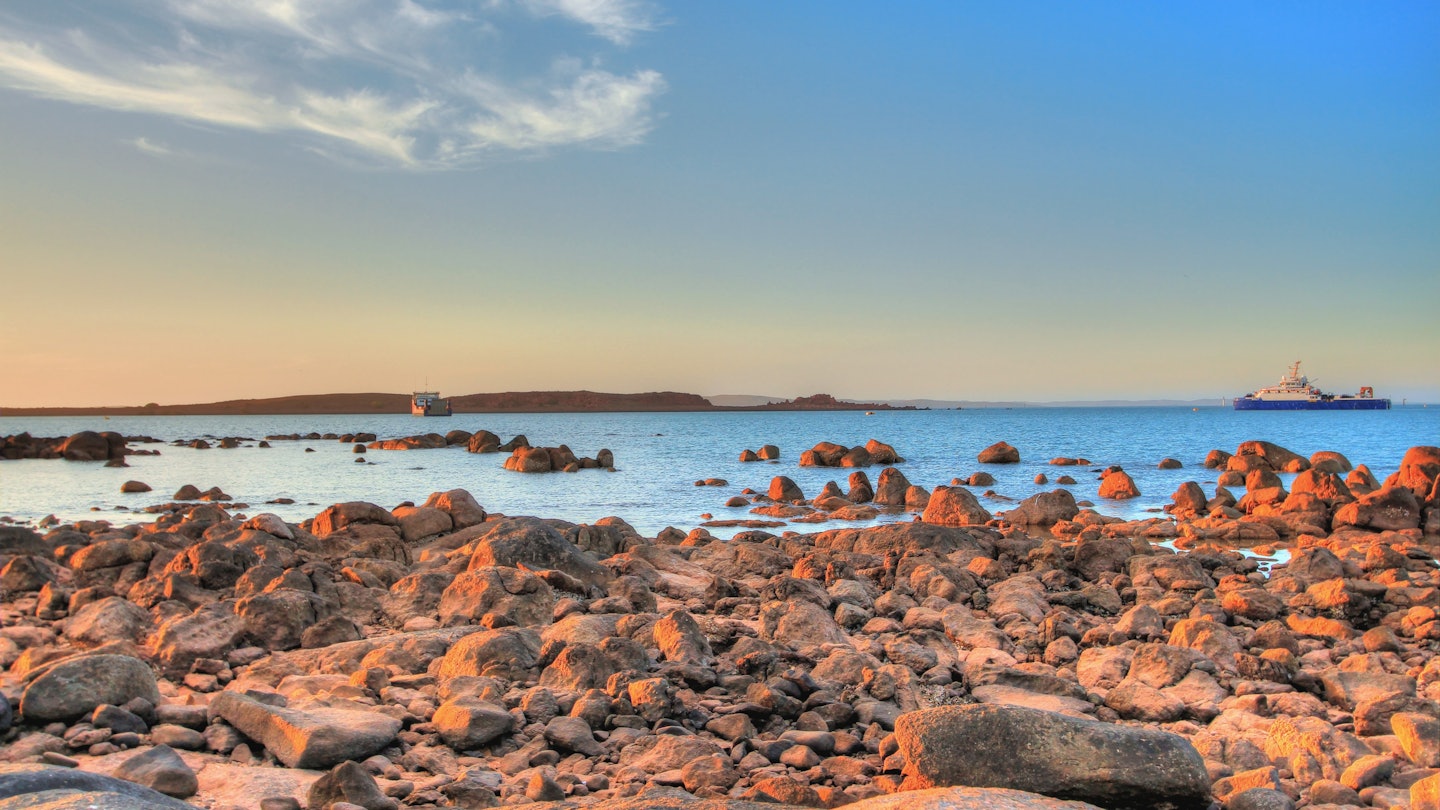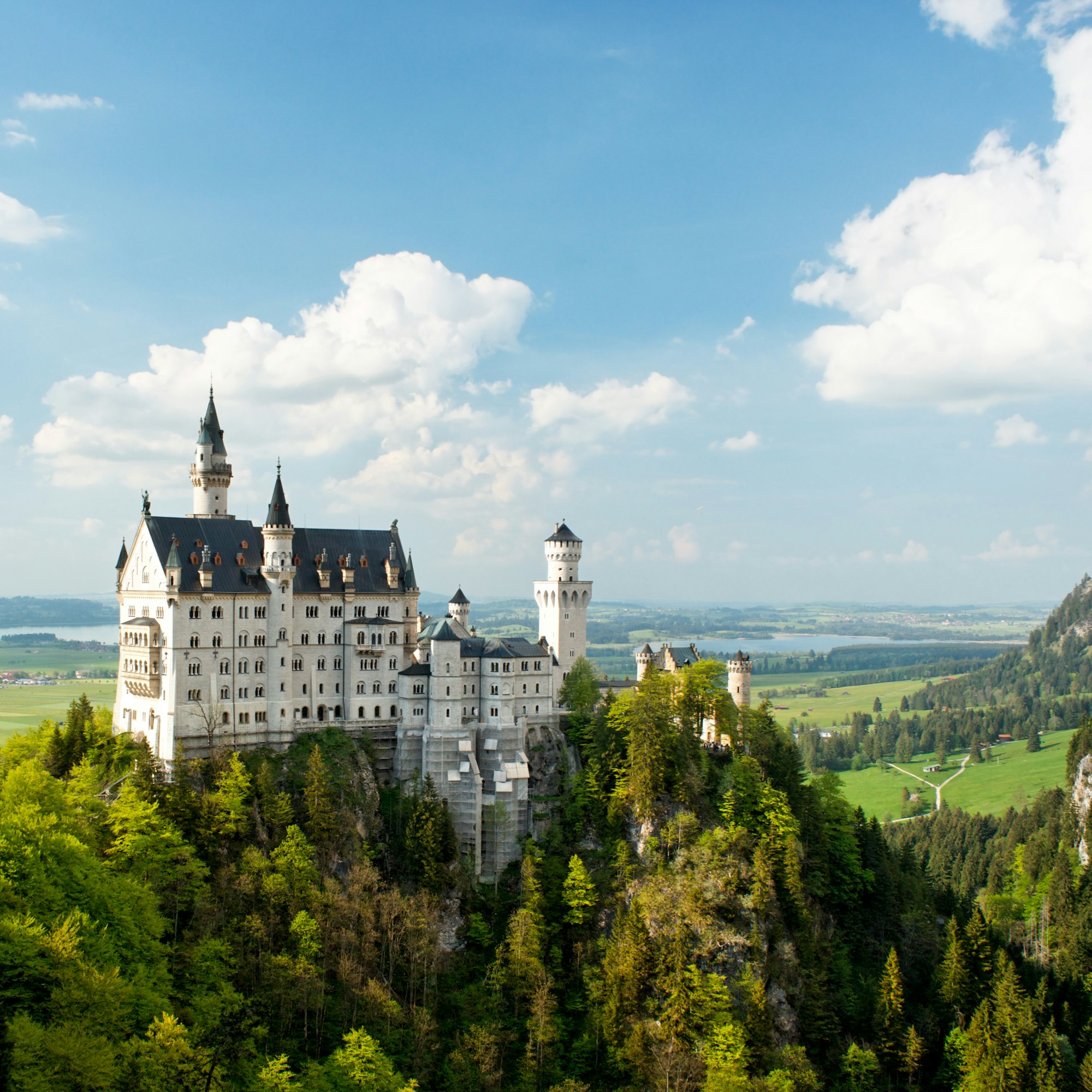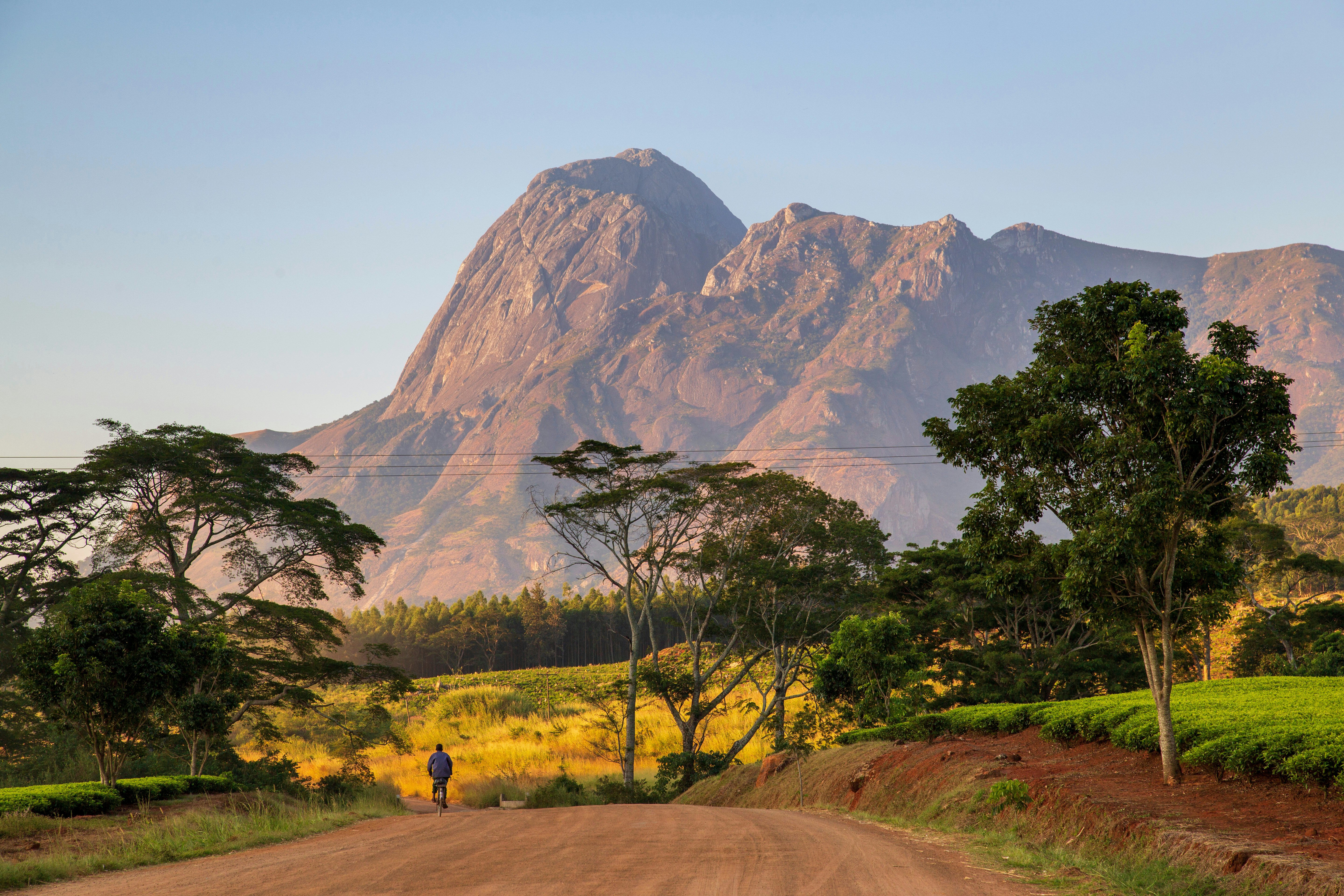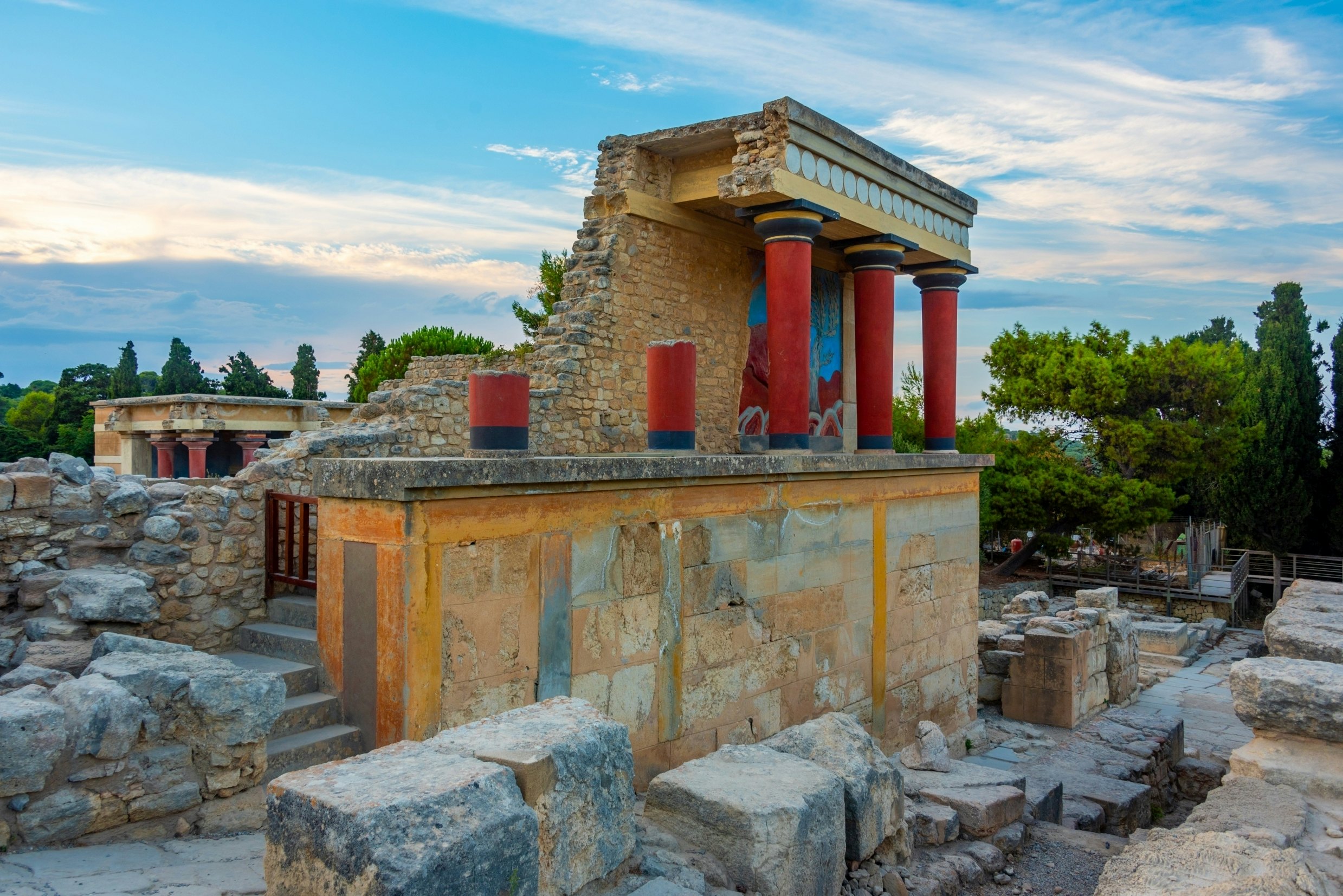Discover the sites that made UNESCO's World Heritage list for 2025

Jul 17, 2025 • 7 min read

The Dampier coastline near Murujuga National Park in Australia. totajla/Shutterstock
Romantic German castles, ancient Australian petroglyphs, and a karst canyon carved through a lush Brazilian park: the 26 new destinations inscribed to UNESCO’s World Heritage List in 2025 honor human history and natural wonders across the globe, preserving each treasure for generations to come.
The latest picks were announced in July at the World Heritage Committee’s Paris conference, where members voted to expand the list to 1248 sites.
To make the list, a destination must meet one of 10 criteria tied to cultural, historical or natural significance – reflected in UNESCO sites like Cambodia's ancient Angkor Wat and Yellowstone’s bubbling geysers.
UNESCO’s stamp of approval can boost tourism and national pride, but may also wind up encouraging overtourism and ecological strain. Still, the benefits often outweigh the costs, providing a framework for conservation while inspiring international acclaim.
For destinations under duress, the label can also act as a lifeline. When UNESCO added Palestine’s Monastery of Saint Hilarion to its Endangered List in 2024, it opened the door to technical and financial aid during the ongoing conflict in the Gaza Strip.
This year’s additions span six continents and more than one million years of history, spotlighting both bucket-list landmarks and lesser-known marvels. Here are eight of the most travel-worthy spots from 2025.

The Palaces of King Ludwig II of Bavaria
Germany
Schloss Neuschwanstein – the inspiration for Disneyland’s Sleeping Beauty Castle – enchanted its way onto the World Heritage List with three other 19th-century German complexes built under King Ludwig between 1864 and 1886. The theatrical assemblage – Neuschwanstein, Linderhof, Schachen and Herrenchiemsee – fuses fairy-tale design with Bavaria's alpine landscape, showcasing Ludwig’s love of Germanic folklore and Wagnerian grandeur. Neuschwanstein is the most recognizable of the bunch, attracting 1.4 million visitors annually – many of whom travel from Munich, Bavaria’s capital, to see the limestone stunner rising above the forested lake region. Ludwig, who withdrew from public life, lived in the castle for a short 170 days before he was found dead along with his psychiatrist, who certified him insane. The fortress opened as a museum shortly after, transforming Ludwig’s private dream world into one of Germany’s most idyllic destinations.
The Archaeological Ensemble of 17th Century Port Royal
Jamaica
Once dubbed “the wickedest city on earth,” Port Royal fashioned itself into a global hub of 17th-century English commerce. As merchants grew rich by trading enslaved Africans and sugar, the Kingston Harbour town thrived as a home base for pirates and a haven for vice. It all came crashing down in 1692, when a powerful earthquake sank two-thirds of the city within minutes, preserving everything from brothels and religious buildings like a Caribbean Pompeii. Now the only sunken city in the Western Hemisphere, Port Royal offers archaeological insight into colonial life. Fort Charles – the only fort to survive the earthquake – unearths the town’s maritime past on dry land. Scuba tours of the city’s underwater resting place require a government permit.

Xixia Imperial Tombs
China
Rising like weathered beehives from the arid eastern foothills of China’s Helan Mountains near Yinchuan, these nine majestic mausoleums and 271 lesser tombs mark the imperial burial grounds of the Xixia Dynasty. Founded in 1038 and destroyed by Genghis Khan’s forces in 1227, the once-mighty Buddhist civilization became a cultural melting pot along the Silk Road where numerous ethnic groups coexisted. The tombs mirror their exchange of ideas, blending Chinese imperial design with artistic influences from Tibet and Central Asia. It’s all anchored by Tomb No. 3 – a 75ft-tall (23m) pagoda built for the dynasty’s first emperor, Li Yuanhao – a small glimpse into the vanished kingdom’s complex culture.
Cambodian Memorial Sites
Cambodia
These Cambodian memorial sites mark the violent legacy of the Khmer Rouge – a rare World Heritage addition spotlighting contemporary atrocities. Between 1975 and 1979, the Communist Khmer Rouge regime murdered an estimated 1.7 to 3 million people – a fifth of the nation’s population. At the Tuol Sleng Genocide Museum, located in capital city Phnom Penh, visitors walk the halls of a high school-turned-prison where more than 15,000 people were tortured and killed. Choeung Ek, featured in the 1984 film The Killing Fields, was used as an execution site and mass grave – now a somber spot for contemplation, 9.3 miles (15km) south of Phnom Penh. A third site, the rural Kampong Chhnang province’s M-13 prison, served as a testing ground for early Khmer Rouge imprisonment and torture practices. Together, these locations preserve the memory of those lost and stand as warnings for future generations.
Murujuga Cultural Landscape
Australia
Western Australia’s remote Burrup Peninsula is home to the world’s largest collection of rock art – a series of up to two million petroglyphs demonstrating more than 50,000 years of Aboriginal creativity. Images of kangaroos, emus, extinct species and the oldest known depiction of a human face decorate the landscape, etched by Ngarda-Ngarli ancestors, whose descendants still steward the red-rock terrain. In recent years, fertilizer and gas plants have threatened the fragile earthworks with toxic acid emissions, and UNESCO’s backing brings hope for protection. One of the best ways to appreciate the art is through Ngurrangga Tours, an Aboriginal-owned company that guides visitors through Murujuga National Park.

Mount Mulanje Cultural Landscape
Malawi
Soaring more than 8201ft (2500m) above southern Malawi’s tea-growing plains, Mount Mulanje is one of the world’s largest inselbergs – a dramatic rock formation jutting abruptly from flatlands like an island in the sky. For the Indigenous Yao, Mang’anja and Lhomwe communities, this towering massif is more than a geological landmark – it’s a sacred site inhabited by ancestral spirits and central to their cultural practices. The granite giant is also Malawi’s premier hiking destination. Visitors can trek through cedar forests and camp in rustic huts with the help of expert guides, who impart local legends and point out endemic fauna like the klipspringer, a nimble-footed dwarf antelope. Routes range from several miles to five-day excursions, passing rambling rivers and waterfalls. Find guides and pre-book huts via Mountain Club of Malawi.
Peruaçu River Canyon
Brazil
It’s all about natural beauty around the Peruaçu River Canyon – a vast karst landscape of cathedral-sized caverns sculpted by water over millions of years. Located within Cavernas do Peruaçu National Park, open since 2014, hikers can spot ancient rock art while crossing an underground waterway flowing beneath dramatic limestone arches. Janelão Cave is the park’s pièce de résistance – a 328ft-high (99m) nature-made temple decorated with the 92ft (28m) Perna da Bailarina (Ballerina’s Leg) – the world’s biggest stalactite. Sunlight streams into many of the subterranean lairs, illuminating their wonders like a well-curated museum exhibit. Visitors must hire a certified local guide to enter the park, where three biomes converge to support more than 2000 plant and animal species.
Minoan Palatial Centres
Greece
Possibly the inspiration for Plato’s legendary Atlantis, the Minoan civilization of Crete was a Mediterranean trendsetter during the Bronze Age. Its influences stretch from Egypt to mainland Greece and beyond, reflected in the six sites added to the World Heritage list. Each ruin – palatial complexes that doubled as community centers from 1900 to 1100 BCE – showcases the sophisticated culture’s knack for architecture and urban planning. Most magnificent is the labyrinthine Palace of Knossos, 3 miles (5km) south of the city of Iraklio, with its frescoes of mythical beasts and community rituals. Nearby centers, such as Phaistos and Malia, echo the island’s legacy – each an ancient piece of Crete’s mysterious puzzle.

The complete list of new World Heritage sites
Here’s the full list of UNESCO’s latest additions for 2025, by continent:
Africa
Diy-Gid-Biy Cultural Landscape of the Mandara Mountains, Cameroon
Coastal and Marine Ecosystems of the Bijagós Archipelago – Omatí Minhô, Guinea-Bissau
Mount Mulanje Cultural Landscape, Malawi
Gola-Tiwai Complex, Sierra Leone
Asia
Cambodian Memorial Sites: From centers of repression to places of peace and reflection, Cambodia
Cultural Heritage Sites of Ancient Khuttal, Tajikistan
Faya Palaeolandscape, United Arab Emirates
Maratha Military Landscapes, India
Prehistoric Sites of the Khorramabad Valley, Iran
Petroglyphs along the Bangucheon Stream, Republic of Korea
Mount Kumgang – Diamond Mountain from the Sea, Democratic People's Republic of Korea
Yen Tu-Vinh Nghiem-Con Son, Kiep Bac Complex of Monuments and Landscapes, Viet Nam
Forest Research Institute Malaysia (FRIM) Forest Park Selangor, Malaysia
Xixia Imperial Tombs, China
Australia
Murujuga Cultural Landscape
Europe
Megaliths of Carnac and of the shores of Morbihan, France
The Palaces of King Ludwig II of Bavaria, Germany
Funerary Tradition in the Prehistory of Sardinia – The domus de janas, Italy
Møns Klint, Denmark
Minoan Palatial Centres, Greece
Rock Paintings of Shulgan-Tash Cave, Russian Federation
Sardis and the Lydian Tumuli of Bin Tepe, Türkiye
North America
Wixárika Route through Sacred Sites to Wirikuta (Tatehuarí Huajuyé), Mexico
The Archaeological Ensemble of 17th Century Port Royal, Jamaica
The Colonial Transisthmian Route of Panamá, Panama
South America
Cavernas do Peruaçu National Park, Brazil




